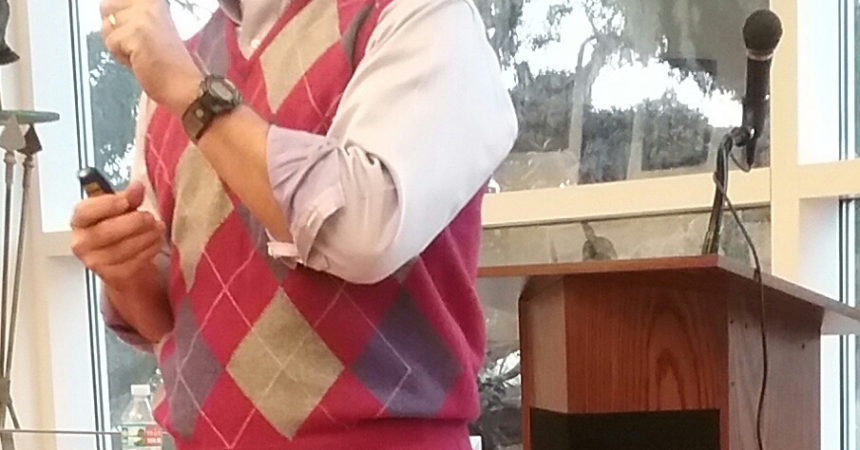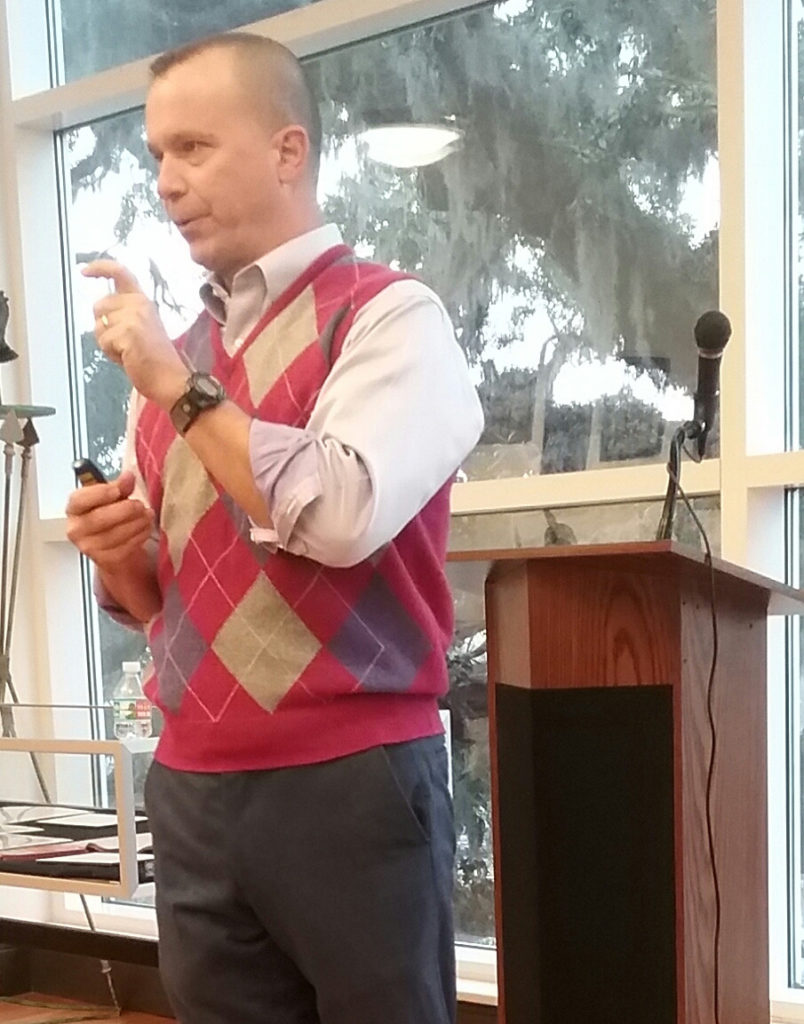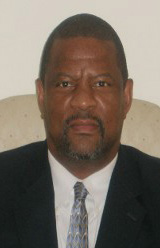
Professors find justice misplaced in Till murder case

FSU professor Davis Houck makes a point about his findings in the Emmitt Till murder case.
Photo by St. Clair Murraine
By St. Clair Murraine
Outlook staff writer
There is no escaping the fact that the legacy of Emmitt Till, who was murdered in the Mississippi Delta more than 60 years ago, lives on despite lingering questions about what led to his death.
Streets are named for him. There are signs around the small town commemorating the Black teenager who wolf-whistled a White female store owner and was eventually murdered.
Countless books have been written and documentaries tell versions of what happened on that fatal day in August of 1955.
Till’s murder case is clearly etched into the memory of everyone who lives in the Mississippi Delta. Exactly what happened the day the 14-year-old boy from Chicago was murdered while visiting relatives in Mississippi vary depending on who is telling it.
Davis Houck, a FSU professor who has done extensive research on the Black Freedom Movement, is doing his best to get the story straight. He’s spent the last three years researching the Till case.
This past Wednesday he told bits and pieces of his discoveries during a presentation at the Meek-Eaton Black Achieves Research Center and Museum on FAMU’s campus. During his 30-minute presentation, Houck debunked or verified some of the popular versions of what happened in Money, Miss.
The overwhelming theme of his presentation was about the misplacement of justice during the trial of the two men charged with mutilating Till’s body that was found in the Tallahatchie River.
The event was arranged by Keith Parker, a sociology and criminal justice professor who uses the case as a point of study in his classroom at FSU.
“We have to share these stories with young people so we can understand the value of life and the commitment of making sure that justice prevails,” Parker said.
He added: “We concluded that if it happened to this 14-year-old boy it could happen to any 14-year-old boy. Keep in mind that was before Trayvon Martin, Eric Garner and a host of other; young people losing their lives for no good reason whatsoever.”
Houck called Till an “archetype of justice unfulfilled,” while saying that the case is a relevant study.
“We have learned his story because he was killed and brutalized, but the jury didn’t convict,” Houck said. “So people are angry for justice because they don’t see the just verdict. They often connect the thread; where did a lot of this start; to key moments in history? They often point to key moments like this stuff and the Till case is one of them.”
Throughout his speech, Houck showed slides of many of the places related to the Till case. The store where Till whistled at Carolyn Bryant still stands in decay overrun by vines. The courthouse where the trial of J.W. Milam and Roy Bryant took place has since been refurbished to its original state.
Houck, who is doing most of his research through the Till Memory Project, also had a display of supporting newspaper clips, which will remain at the Black Archieves through February in observation of Black History Month.
According to Houck’s research, Bryant is said to have recanted her version of what happened in the store that she and her husband, Roy, owned. He also brought to light the fact that the two men who were acquitted sold their confession to Look Magazine.
That led to national coverage of the murder and even reports that it was the impetus for Rosa Parks’ bus protest in Alabama that led to the civil rights movement.
However, Houck questioned Parks’ ties to Till.
“I don’t think it went like that,” he said. “Did Rosa Parks know who Emmitt Till was? Sure. Was it the motivation for her? No. She wrote three books and she never mentioned Emmitt Till.”
The presentation was in part an effort to promote awareness of the injustices that still linger today, Parker said.
“We have to do a better job of instilling in our young people the value of life,” he said. “Those of us who are stewards of life have a responsibility to encourage our young people to read, know the legacies of as many people as we can. You do not have to be a superstar to be a part of history.
“We have to instill in ourselves a sense of worth, a sense of community (and) a sense of purpose. Each of us has a purpose for being here.”








